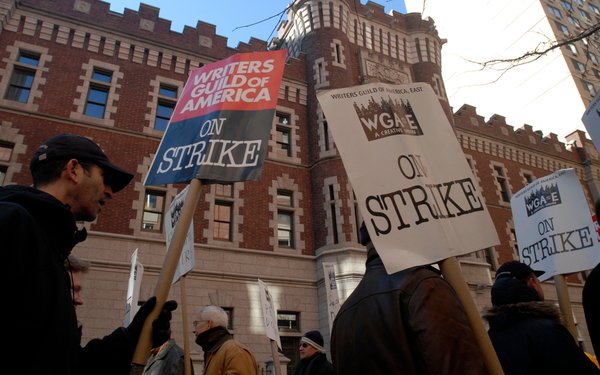Commentary
Write This, Act Out: Selling The Upfront Amid Strikes, Weaker Projections
- by Wayne Friedman , Staff Writer, July 17, 2023

Amid the added disruption of actors' strikes on top of writers' strikes, upfront negotiations continue to raise even more question marks.
A weaker market? Absolutely. Lower dollar volume and sinking cost-per-thousand viewer prices have been projected even before news of the strike hit.
What does this compare to? Perhaps the Summer 2020, in part. That was just months after the COVID-19 pandemic began with much of all U.S. media business -- and many other businesses -- at a standstill.
Specifically, we are focusing on scripted entertainment this year -- the main objective of both actors and writers. That leaves unscripted TV shows, sports and perhaps other content in between. The big difference from three years ago is that there is now virtually no fresh production of any type -- scripted, unscripted, whatever.
advertisement
advertisement
But the difference is apparent -- the broader media business world is still operating. In 2020, virtually everything was shut down.
That means that if both strikes last for any length of time, TV-focused advertisers will shift dollars elsewhere -- to streaming (legacy and non-legacy owned) and other digital media platforms, especially those with big TV/movie libraries as well as new series that viewers have not seen.
The downside, of course, could be inventory availability on those platforms. Much of that deal-making still needs to go through legacy TV advertising sellers -- for the likes of Paramount+, Disney+, Hulu, Peacock, Max, and AMC+.
But there other also other sources including Roku, Fox Corp’s Tubi, Paramount Global’s Pluto TV, Netflix, and YouTube and YouTube TV.
Experts are looking further ahead: TV advertising buying in the closer-to-air "scatter" markets, which will almost certainly see higher pricing. That is the hope for TV ad sellers.
TV network-based companies are likely to hold back prime-time and other inventory and look to make hay for the rest of 2024 in scatter.
They may then sell a low-ish 50% of their upfront advertising inventory versus a high of 75% or so they typically sell in more normal performing years? Sounds plausible.
Many might still wonder about the upfront market itself -- for the long term. To a great extent, this is expected to continue, especially with a stronger focus on sports TV advertising inventory before the start of a new TV season. Perhaps the upfront will now be termed the “live” TV advertising upfront market.
Silver lining? It seems that the overall economy is looking at better prospects in the fourth quarter of this year and early into 2024 as the inflation concerns abate.
Most likely, that is what the talking points for ad executives of legacy TV networks are like right now.



